The Catch
Way more than any sane person needs to know about the most famous catch in Baseball History…
Sometime in the early 1960s the Rocklin, California Little League put all us players on buses and took us to San Francisco to see the Giants play in Candlestick Park and the only thing I remember about that day is sitting in the outfield bleachers watching Willie Mays and kids calling “Say Hey, Willie!” (“Say Hey” was how Willie greeted teammates) and Willie eventually turning around and saying hey to all us irritating kids.
So while it was group “Say Hey” like the pope blessing a crowd in St. Peter’s Square, Willie Mays once said “Say Hey” to me and as Bill Murray said about his encounter with the Dalai Lama: “So I got that going for me.”
(And if you don’t get that last reference you really need to watch Caddy Shack again.)
Willie Mays died a few days ago and I based my cartoon on a famous picture of a famous catch he made in the 1954 World Series and we’ll talk a lot more about that, but first here’s why Willie Mays was such a Big Deal in Baseball.
5-Tool Players
There are five tools in baseball – run, field, throw, hit and hit for power – and baseball scouts rate players on a scale of 20-to-80 (or 2-to-8 depending on the team they work for) and 50 is major-league average so if you ask how good is that right fielder’s arm and a scout answers, “He’s a 70” you know exactly what the scout means:
The outfielder’s arm is well above average, but not the very best.
One of the very many irritating things about analytics advocates is their tendency to take clear things and make them murky because then you won’t understand them and they can feel superior and maybe get a job on a Big League team explaining their mystery metrics to the uninitiated.
But if you go to the trouble to read the formula for Wins Above Replacement (which is supposedly the metric that sums up a player’s worth) at the very end it says “WAR works best as an approximation” and maybe that’s because the Baseball’s Poindexters can’t agree on how WAR is calculated, but what it means for sure is WAR is a guesstimate and I’d rather get my guesstimates from scouts who have spent their lives playing and watching baseball than guys who never stood in a batter’s box and still live with their parents.
(OK, I may have gotten off track here.)
Willie Mays was a 5-tool player along with guys like Hank Aaron, Mickey Mantle and Mike Trout. As great as they were, Babe Ruth, Ted Williams and Stan Musial were not considered 5-tool players because they weren’t fast enough.
In 2022 Fox Sports wrote an article about the 5-tool players in the Big Leagues that season and estimated there were four of them. And when you look at the guys considered 5-tool players, they were only 5-tool players for a few seasons because they get older and slower so there aren’t very many of them and they can’t do it for very long.
That’s how rare 5-tool players are and why they’re treated like gods who decided to quit heaving thunderbolts and come down off Mount Olympus and play baseball.
Outfield Positioning
Baseball is unique because while infields are uniform, foul territory and outfield walls aren’t (imagine if some football field were 95 yards long and some were 107) and the Polo Grounds where the New York Giants played wasn’t designed for baseball, as this diagram makes clear:
That’s right, centerfield in the Polo Grounds had an in-play area 483 feet from home plate and for comparison’s sake Kauffman Stadium’s centerfield is 410 feet from home plate and the K is considered a big ballpark.
Two points of interest:
Every ballpark I ever heard of is shorter in the corners and deeper in centerfield, so if you want to hit home runs you hit the ball out in front of the plate and pull it, but that means you swing sooner which makes you easier to fool. If you want to hit for average you hit the ball over the plate with the bat at a 90-degree angle to the flight of the ball and aim for centerfield because there’s so much more ground for the centerfielder to cover. So if you want the glory of home runs you gotta accept the risk of striking out and if you want a high average, you need to give up on that home run glamour which means Baseball is a lot like Life: it requires you to be logical, but tempts you to be emotional.
Last night I watched the game between the Giants and the Cardinals played in Birmingham, Alabama’s Rickwood field and they talked about the park’s original dimensions which according to the internet (and I found more than one set of numbers, so once again, way to go internet) the left field foul pole was 405 feet away from home plate, centerfield was 470 and a shorter, but still not short 335 to the right field pole and that’s because it was built in 1910 and home runs weren’t a big deal yet.
That’s Home Run Baker (who looks like he’s posing for a class picture at Leavenworth) who never hit more than 12 home runs in a season, but still led let the American League in homers four times.
And that’s Babe Ruth who started holding the bat all the way down by the knob and swinging out his ass and six years after Baker led the American League in homers with nine, Babe led the American League with 54, which led a lot of ballplayers to start copying Ruth, which caused Ty Cobb – who liked a game of speed and strategy – to blame Ruth for ruining baseball.
(On the other hand, Ty Cobb was a dick.)
These days — at least theoretically — outfielders position themselves 70-to-75 steps from second base (it’s called “straight up”) and then adjust off that because second base is always in the same place. But coming in on a ball is easier than going back, so lousy outfielders (and baseball has a lot of them right now because front offices have fallen in love with home runs and will play a shitty defender if he hits enough of them) will position themselves in relationship to the wall instead.
So lousy outfielders play five steps off the warning track no matter what park they’re in and in a big ballpark we might see a pitcher get dinked and doinked to death on balls just over the infield and think it’s the pitcher’s fault when it’s really his outfielders who are too scared to play shallow.
In any case…
Willie Mays was playing centerfield with enough space to land a 747 behind him which is why he could run down a ball hit an estimated 450 feet.
That Wall Isn’t Padded
The first thing that jumps out at me when I look at that picture is the fact that the wall isn’t padded and they started adding warning tracks and padding outfield walls in the 1940s and for starters, here’s how warning tracks work:
Warning tracks are called that because they’re dirt (in most cases) and even though they’re looking up at the ball, outfielders know once their spikes leave grass and hit dirt they’re getting close to the wall.
According to the internet, MLB started requiring warning tracks in July of 1949 after some serious injuries to players including a Brooklyn Dodger outfielder named Pete Reiser who kept running into walls, fractured his skull once and had to be carried off the field 11 times.
Also (and this is moronic)…
Even today warning tracks are not all the same width so an outfielder better know what city he’s playing in and how many steps he has before hitting the wall and some of the inside parks with artificial turf just use different colored artificial turf for their warning tracks, so while it looks good on TV the warning track is actually useless.
And the number of steps you get on a track before hitting a wall varies, depending on whether you’re running straight at the wall or at an angle and there are a number of outfielders who say the hell with all that counting steps and give up on making a catch as soon as they hit the track and just play the carom.
Now here’s a story by former Big League outfielder Doug Glanville that argues all warning tracks are useless and explains why…
https://www.espn.com/mlb/story/_/id/8313341/baseball-warning-track-useless
Padded walls became a thing in the 1940s which is better than nothing, but if you want to feel just how well that works, put a mattress up against the side of your garage, get a running start and hit it face first.
Here’s a reverse angle shot of Willie’s catch and you can see the backside of the wall he was sprinting toward and the wall appears to be a substantial structure. So Willie was running full-tilt with no padding on the wall, which makes The Catch even more remarkable.
But wait, it gets better.
The Most Difficult Ball to Catch
Fly balls and line drives seen from the side are easier to judge (you see the arc) than balls hit right at you, which is why you need the guy next to you yelling “In! In! In!” or “Back! Back! Back!” to get you started in the right direction.
The guy next to you makes you better or worse, depending on how early he can judge the ball you have to catch and the effect teammates have on one another is incredibly important, but advanced metrics ignores it because they don’t know how to measure it, which is a totally different essay which I’ve already written.
So whether the guy next to gives you a clue or you figure it out for yourself, you decide the ball is over your head so you need to start running back. Which means you take a drop step toward the side you think the ball will be on and in this video you can see Willie thinks the ball will be over his right shoulder:
But line drives have a lot of spin and tend to move sideways as well as forward and the ball drifts directly over Willie’s head and then he’s got no choice but to look straight up and wait for the ball to appear over the bill of his cap.
So Willie Mays is running full speed toward a solid wall with no padding to catch a ball he temporarily can’t see. And according to Willie, the catch was easy, it was the throw afterwards he was worried about.
The Situation Matters
There are players who can perform at a certain level, but can’t at another and while statisticians might claim there is no such thing as a “clutch” player, one day while I was in the Royals clubhouse, I observed that while there might not be “clutch” players, “chokers” are real which made all the players laugh, mostly because they agreed with me.
Fans tend to think “clutch” is the ability to raise the level of your game in Big Moments (sometimes it is) but most of the time “clutch” is the ability to do everything the same way over and over again no matter the circumstances or how many people are watching and you’ll look like you raised the level of your game when you stay the same and your opponents tries to raise the level of his game and plays worse.
I once asked George Brett why he was “clutch” and he said some people couldn’t forget it was the World Series, there were two outs and the tying run was on second base, but he could. (George hit .337 and slugged .627 in the postseason so there’s a pretty good chance he knew what he was talking about.)
Willie’s catch came in the 1954 World Series in the eighth inning of a 2-2 game with runners on first and second and definitely saved one run if not two and also saved the game because it went to extra innings still tied 2-2 and he did it with 52,751 people watching.
Today’s Lesson
Jeff Francoeur was the Royals right fielder for a couple seasons and had a great arm and one night threw out a runner at home plate and I was there in the press box. His throw made me realize why we buy tickets and go to games.
Because I could tell everybody about the great throw Frenchy made the night before and they could look it up on the internet, but it wouldn’t be as amazing because they’d know they’re about to see a great play. But when Frenchy let go of the ball that night nobody knew if the throw was going to beat the runner or be on line, so there were a few moments of incredible suspense and tension while you waited to see the outcome.
Which is why the crowd went batshit about Willie’s catch; because while he was sprinting nobody knew if he’d make it and probably thought he wouldn’t get there and when someone does something fantastic live, there’s that moment of: “Holy shit! He caught it!”
The people who run pro sports have done a lot to screw them up because they’re trying to wring every last dime out of their fans, which leads to some bad short-term decisions, but what they can’t screw up no matter how hard they try is great athletes doing fantastic things, so when you see that happen, enjoy the moment.
And “The Catch” is on that list.



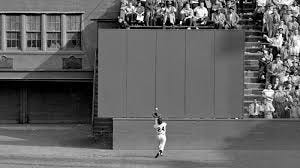
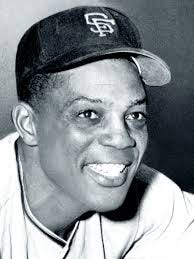


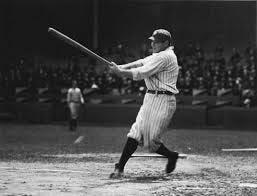
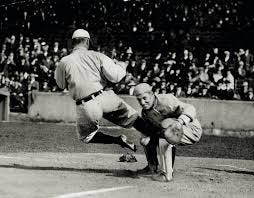
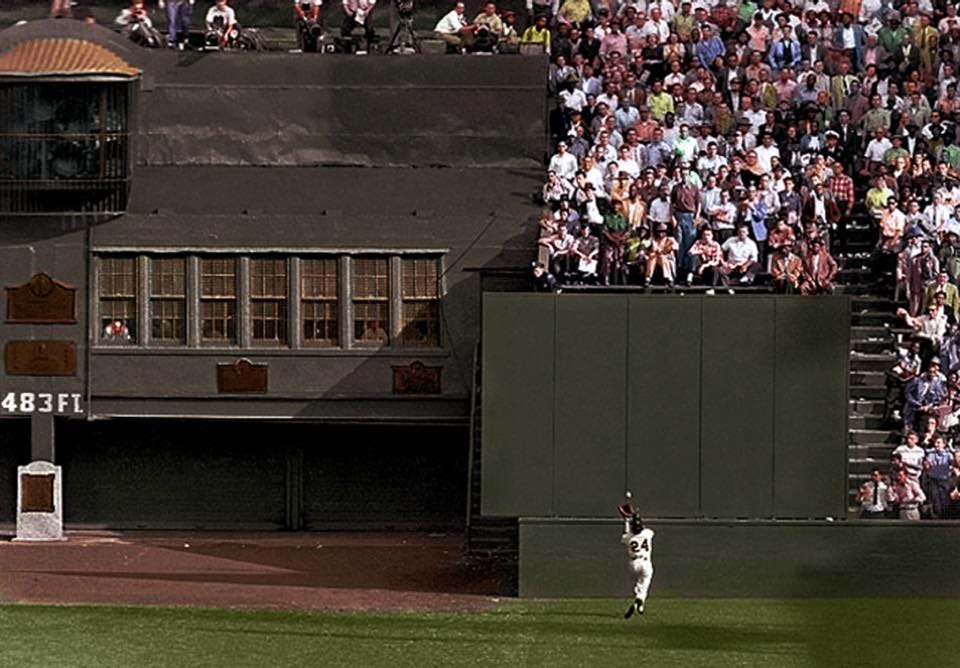
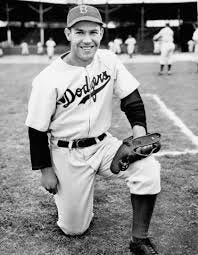
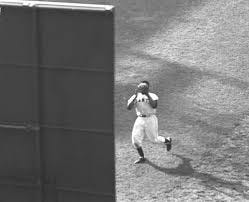
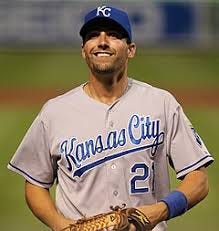
Just watched The Catch video several times and my bad, there is a warning track, but a very narrow one. It wasn't visible in the still photos, but the TV cameras were shot at a different angle so if you're the former groundskeeper of the Polo Grounds my apologies and congratulations on being 140 years old. Willie winds up on the ground right next to the wall, so still a great catch either way.
Reading some of the comments (always a mistake) in the video of The Catch, and while most commenters recognize its greatness, one guy (there's always at least one) claims Jim Edmonds made multiple similar and better catches. He supports his argument by saying The Catch is the only one we ever see of Willie Mays, so he obviously never had another play like it, while Edmonds did it many times. He even claimed Mays likely was playing out of position. smh P.S. Thanks for the link to the Glanville article.